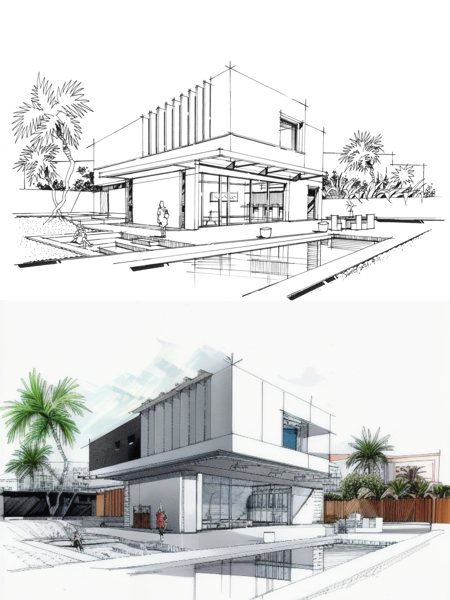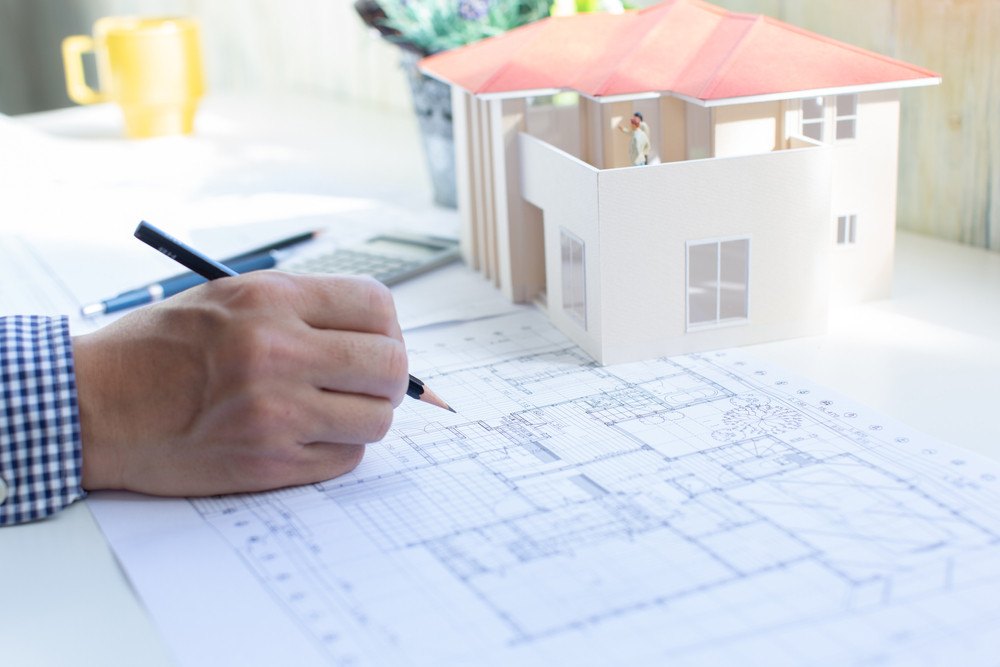Exactly How CDA Architects Provide Cutting-Edge Solutions for Lasting Design
Exactly How CDA Architects Provide Cutting-Edge Solutions for Lasting Design
Blog Article
The Effect of Technical Innovations on the Style Practices of Contemporary Architects
The rapid advancement of technological devices has dramatically reshaped the design landscape for contemporary architects, promoting unprecedented degrees of innovation and sustainability. The assimilation of Building Info Modeling (BIM), parametric design, and expert system has not only structured collaboration amongst diverse teams yet also redefined job execution. As designers welcome these developments, they are faced with intricate challenges that might influence their creative processes. Checking out these characteristics reveals a nuanced interplay in between modern technology and traditional style methods, motivating a closer evaluation of what the future holds for building techniques.
Development of Architectural Tools
How have building tools transformed the layout and building processes over the centuries? The evolution of building tools has actually substantially affected the efficiency, precision, and imagination of design and building and construction.
With the development of the Renaissance, the introduction of the compass and the protractor noted a crucial shift. These tools made it possible for designers to achieve better accuracy in their layouts, helping with the emergence of even more elaborate and proportional buildings (cda architects). The Industrial Change even more revolutionized building exercise with the intro of mechanical tools and products, enabling for bigger and much more enthusiastic projects
In the 20th century, the advancement of computer-aided layout (CAD) software application changed the landscape once more, supplying architects with unmatched capacities in modeling and visualization. Today, advanced devices such as Structure Information Modeling (BIM) and parametric style software program continue to press the borders of architectural advancement, enabling a much more incorporated strategy to design and building procedures.

Improved Cooperation in Layout
As innovation remains to evolve, boosted partnership in design has actually ended up being a cornerstone of modern-day architectural technique. The combination of digital devices such as Building Details Modeling (BIM), cloud-based platforms, and progressed visualization software application has changed the way engineers, engineers, and stakeholders communicate throughout the layout process. These tools help with real-time communication, enabling groups to share ideas, alterations, and comments immediately, regardless of geographical place.
Moreover, digital truth (VIRTUAL REALITY) and enhanced fact (AR) have further enriched joint efforts by allowing immersive experiences that allow clients and staff member to picture tasks in a much more interesting manner. This level of communication not just enhances understanding however additionally promotes a feeling of possession among stakeholders, causing even more informed decision-making.
Furthermore, interdisciplinary cooperation has been streamlined with these technical advancements, allowing engineers to function more carefully with various other specialists, such as urban planners and environmental experts. The outcome is an extra cohesive method to create that takes into consideration numerous perspectives and experience. Ultimately, enhanced collaboration in layout is not merely a pattern; it is crucial for creating innovative, functional, and aesthetically pleasing architecture in a progressively complicated world.
Sustainability With Innovation
Sustainability in design has progressively ended up being intertwined with technological development, driving the market toward environmentally responsible practices - cda architects. Contemporary architects are leveraging innovative modern technologies to decrease ecological effect while improving the performance of buildings. One prominent instance is making use of Structure Info Modeling (BIM), which enables for accurate planning and source appropriation, minimizing waste during construction and promoting power effectiveness throughout a building's lifecycle
Moreover, clever products and energy-efficient systems are being integrated right into layouts to enhance resource use. Technologies such as solar cells why not try here and green roof harness renewable resource resources, adding to decreased carbon impacts. Furthermore, the application of synthetic knowledge in style processes makes it possible for designers to simulate and assess energy intake, assisting decisions towards more lasting results.
The integration of lasting technologies not just aligns with international environmental objectives but additionally meets a boosting demand from consumers for green remedies. As designers accept these technologies, the focus changes towards developing spaces that are not just cosmetically pleasing however also functionally sustainable, therefore redefining the standards of modern-day architecture. By doing this, modern technology works as a stimulant for sustainability, enabling designers to make buildings that respect and improve the native environment.
Difficulties in Execution
While technological developments in design hold great guarantee for improving sustainability, their execution their website frequently comes across substantial obstacles. One primary obstacle is the steep discovering contour linked with brand-new technologies. Architects and building experts might call for considerable training to properly utilize advanced software and tools, which can delay project timelines and increase costs.
Additionally, the integration of emerging technologies, such as Building Information Modeling (BIM) and sustainable materials, often necessitates collaboration across multidisciplinary groups. This collaboration can be prevented by distinctions in proficiency, workflows, and communication designs, bring about possible disputes and ineffectiveness.
Financial restrictions even more complicate the fostering of cutting-edge innovations. Numerous architectural companies, specifically smaller ones, may do not have the sources to purchase advanced tools, restricting their capability to contend with larger companies that can pay for such investments.
In addition, governing frameworks and building regulations might not equal technical improvements, creating obscurity and prospective compliance concerns. This difficulty can discourage engineers discover here from fully welcoming new technologies, as the danger of non-compliance may surpass the benefits. Therefore, attending to these implementation obstacles is important for the successful combination of technical improvements in contemporary architectural techniques.
Future Trends in Design
The challenges connected with the execution of new innovations in style have triggered a reevaluation of future fads within the industry. As designers browse issues such as sustainability, urbanization, and social equity, they are progressively taking on ingenious innovations to enhance layout effectiveness and ecological efficiency.
One prominent pattern is the assimilation of artificial intelligence (AI) in the style procedure. AI devices can analyze large datasets to notify layout choices, enhancing both creativity and functionality. Building Info Modeling (BIM) proceeds to progress, making it possible for real-time cooperation amongst stakeholders and promoting streamlined project management.
Sustainable design practices are also gaining momentum, with architects focusing on flexible reuse and regenerative layout concepts that decrease source usage and waste. The consolidation of wise materials and sustainable energy sources will further enhance the strength of structures when faced with environment modification.
Furthermore, the increase of parametric design permits for even more individualized and context-sensitive architectural services. By harnessing these advancements, engineers are poised to create constructed settings that not only attend to the instant needs of culture however also prepare for future obstacles, thus redefining the role of style in an ever-changing world.
Conclusion

Report this page